You know, we joke a lot about how hard it is to convince our kids to do their homework, because — well, it usually is. But the truth is that we understand — it’s hard to do our own work when we’re not in a workspace we love and look forward to visiting each day.
We’ve learned that it’s incredibly important to give our kids their very own, personalized kids’ workspaces: Special places that they can call their own, designed with their specific likes and learning styles in mind.
(And of course, the actual space you have available for such kid workspaces. We’re not all in mansions, yo!)
So in the spirit of motivating our kids to want to learn in every way we can, here are some kids’ workspace ideas that we’re confident will help inspire them to sit down and commit to those worksheets, reading assignments, and math problems. Even the ones we have trouble helping them with.
CMP is an rstyle affiliate
1. Location, location, location
Before you set up a single desk or plug in a laptop, think about how your kids seem to focus best.
If they seem easily distracted, consider an out-of-the-way spot in your house that you could transform into a quiet study space. If silence too creepy for studying, look for a spot that’s close enough to the action that they get the white noise they need — but not dead center of the kitchen, where dinner prep becomes a distraction.
By the way, the U.S. Department of Education even says that quiet background music is okay for studying, but to put the kibosh on TV or loud songs from the radio.
2. Get creative with your space
Yes, you can buy a desk and pop it in the center of a room if you have the space. But alternatively, we’ve seen kids nestled into some impressively creative workspaces, throughout our years of looking for kids’ workspace solutions for families.
Just for a few idea starters, try:
-a kids’ workspace in a converted closet, like the amazing kids’ workspace above by Kathy Corbet Interiors
-a desk area attached to a bookcase
-a kids’ workspace built into a loft bed
-a desk area built under a loft bed
Get creative!
3. Find the ideal desk and chair
Kids are smaller, faster, and springier than we are, but ergonomics are still just as important to their growing bodies. So be sure you’re picking out the right chair, first and foremost.
If your child’s feet are flat on the floor while sitting, with knees bent at a 90-degree angle, then the chair is the perfect ergonomic height. And more comfort equals more concentration — with fewer cases of the fidgets.
Here’s a PDF of kids’ chair and table height guidelines that can help give you an idea of what heights you should start with, based on your child’s age and size.
Your kid’s desk itself doesn’t have to be fancy; what matters most is the height; it should be about eight inches above the chair’s seat. Check out our roundup of modern kids’ desks for small spaces for options we still love, like PB Teen’s cool Z Desk (above) in both white and natural hardwood.

Also, we love IKEA’s tips for structuring a flexible kids’ workspace. Some kids may feel more comfortable in chairs that have movement to them, some need a sturdy chair, while others might be at the best with standing support, as in the NILSERIK chair, shown here and at very top, which offers a more active sitting position.
As kids grow, they’ll discover what works best for them. And so will you.
4. Keep clutter to a minimum. Really.
A cluttered desk space spells trouble for anyone — it’s so much harder to focus (and meet deadlines) when a kids’ workspace is strewn with toys, too many pencils, cereal bar crumbs (ahem), empty water bottles…it’s all gotta go.
Instead, stock the desk with the basic supplies you know your kids will need for their desk each day. Think of it as a capsule desk, the way you might have a capsule wardrobe.
We recently shared this professional organizer’s tip for creating a mobile homework hub for small spaces, but the thinking applies for any kids’ workspace at all: limit desk supplies to daily needs and keep the hole punches, spare binder rings and other not-so-daily-needs in one other specific place.
This way, they always have what they need right in front of them; and for the things they don’t, your kids won’t set off on a search for one piece of tape that inevitably turns into a long stop at the refrigerator and a visit with the dog and a jump on the trampoline before getting back to their desk.
Without the tape.
5. Let inspiring wall art inspire
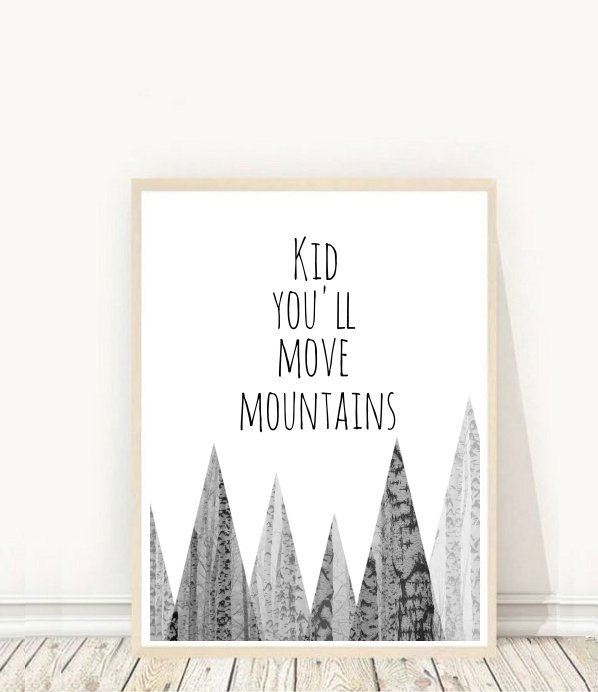
We know how powerful inspirational wall art in our own offices can be, and it’s just as effective for kids’ workspaces.
The key is finding the artwork that most resonates and inspires your own kids. (Remember Homer’s whole thing about individualized learning based on interest? Well, that applies here too.)
A few cheeky words may be enough to get the job done. Of course Etsy artists have so many options. We love this Kid, You’ll Move Mountains inspirational artwork from Australian shop Honeytree Prints — and it’s an affordable instant download you can print yourself, too.
Wall decals and wallpaper can also be gorgeous, colorful choices for kids’ spaces. Or maybe a child will feel most motivated with their own works of art on the wall. So long as they love looking at it, it’s the right choice.
6. Make sure desk lighting is good lighting.

Reading in dim light won’t cause kids’ eyesight to go bad like our parents used to tell us, but it can dry out and tire little eyes — which, to a kid who’s trying to study, feels just as bad.
Experts aren’t too crazy about overhead fluorescent lights either.
Your best bet: natural light from a nearby window. But when kids are studying after hours, they’ll need the power of a good desk lamp. Regular LED or incandescent bulbs in simple sconce desk lamps should do the trick, and they’re not expensive. Look for 60-watt bulbs if you have natural light working for you; or up the wattage to 75 and consider adding ambient overhead lights, especially for nighttime studying.
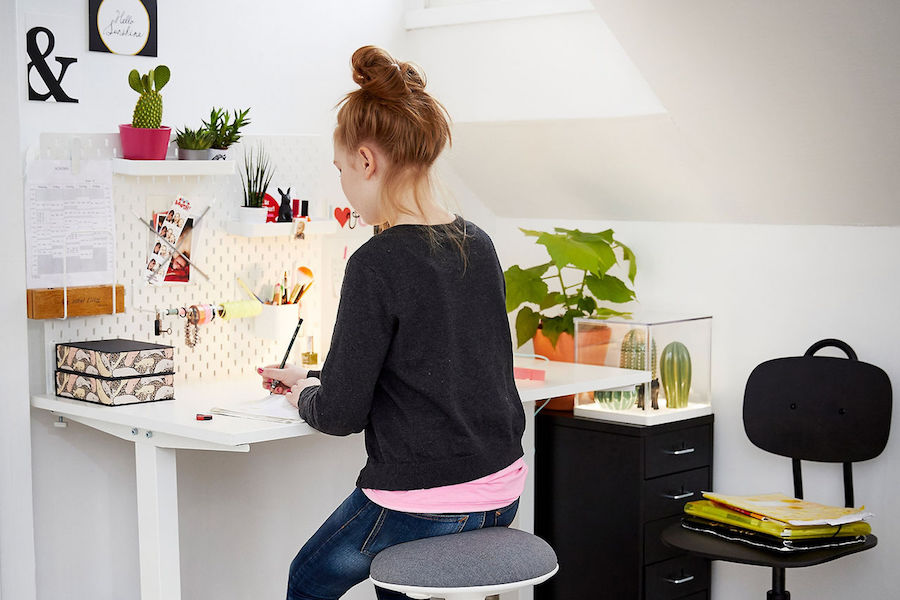
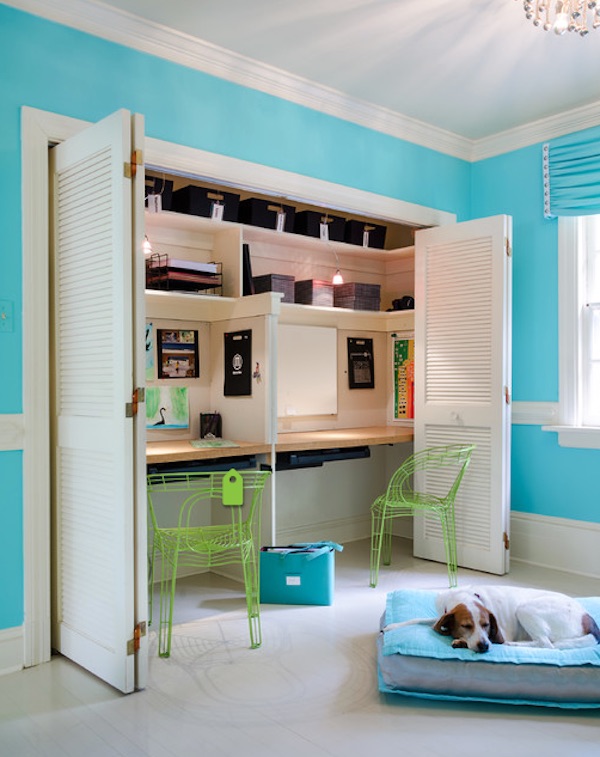
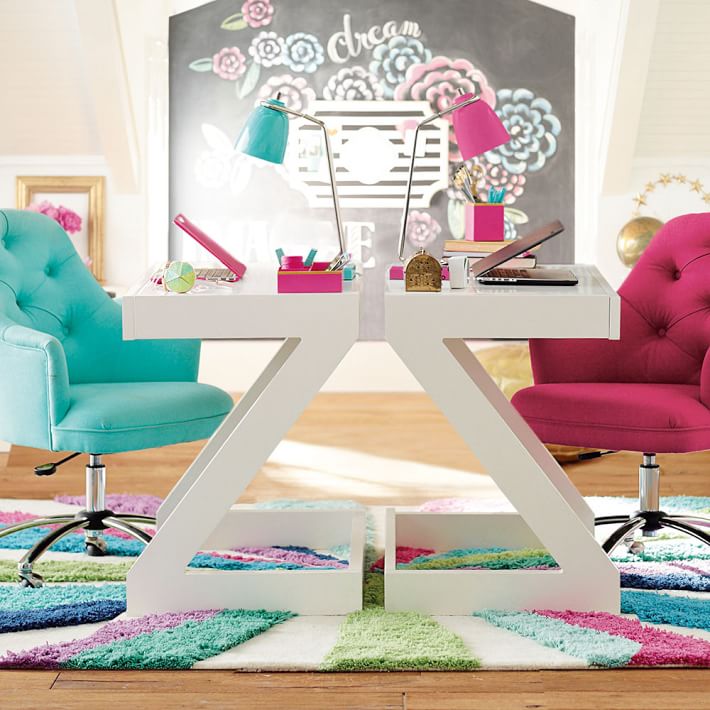
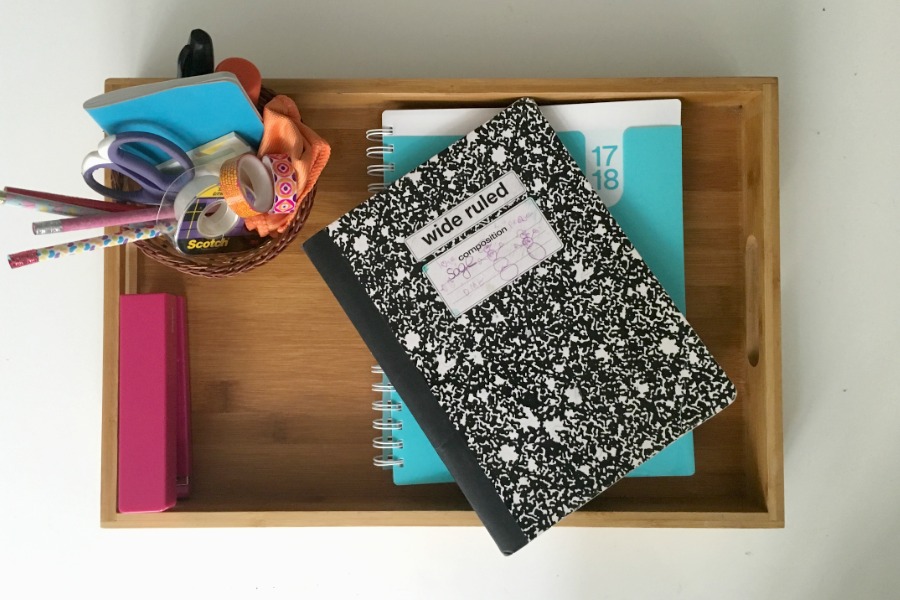




That desk in the first picture is so so cute – I would be happy to have it for myself! Do you know where that cute cube with the cactus sculptures came from? It is adorable! Thanks!
Hi Beth! That concept room is from IKEA so looks like (as they always do so well) they hacked their own items.
Here’s the “Helmer” drawer unit on casters: https://www.ikea.com/gb/en/ideas/study-your-way-the-flexible-space-1364396859028/ For the cube, search for “acrylic display box (with white base)” and try to match the size with the dimensions of the drawer top. I did find this on quick look: https://www.shoppopdisplays.com/10090ABWH/acrylic-display-box-4-x-4-x-4-with-white-base.html
Good luck!